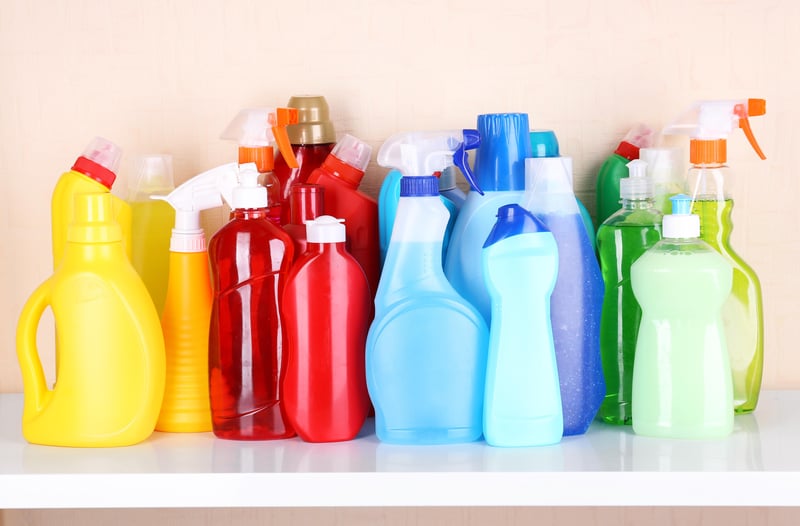Get Healthy!

- Cara Murez
- Posted September 14, 2023
Cleaning Products, Even Green Ones, Emit Unhealthy Toxins
Everyday products used for cleaning or freshening the air may release hundreds of hazardous volatile organic compounds, according to new research.
Both conventional and "green" products emitted these VOCs in an analysis by the Environmental Working Group, though the green cleaners had less of them.
"This study is a wake-up call for consumers, researchers and regulators to be more aware of the potential risks associated with the numerous chemicals entering our indoor air,"said lead research Alexis Temkin, a senior toxicologist at EWG.
"Our findings emphasize a way to reduce exposure to hazardous VOCs -- by selecting products that are 'green,' especially those that are 'green' and 'fragrance-free,'" she said in an EWG news release.
In all, scientists tested 30 cleaning products. They included a mix of multipurpose and glass cleaners, as well as air fresheners.
The analysis detected 530 unique VOCs, including 193 with the potential to cause health harms such as respiratory system damage, increased cancer risk and developmental and reproductive problems.
While VOCs affect both indoor and outdoor air, their impact inside is much greater, according to the study. Their effect on indoor air is two to five times more than that on outdoor air, and possibly as much as 10 times more, researchers said. Some products emit VOCs for days, weeks or even months.
On average, products labeled green emitted about half as many VOCs. Those labeled fragrance-free emitted nearly eight times fewer VOCs than conventional cleaners and four times less than green products containing fragrance.
On average, the fragrance-free green products contained four chemicals classified as hazardous, compared to about 15 in green products with fragrance and 22 in conventional products.
The health harms of VOCs are especially concerning because of how many Americans may be exposed to them in the workplace, EWG said.
Those in the cleaning industry have a 50% higher asthma risk, according to EWG. They also have a 43% higher risk of chronic obstructive pulmonary disease, or COPD. Women who do this work also have a greater risk of lung cancer.
Higher use of certain indoor cleaners also appears to affect fetuses and infants. This was associated with a greater risk of asthma and wheezing in childhood.
"These cleaning products may hurt our health, but they may also harm the environment,"Samara Geller, senior director of cleaning science at EWG, said in the release.
VOCs may also be adding to existing environmental concerns. About half of VOCs responsible for air pollution come from consumer products, according to a 2018 study.
"Going green with your cleaning products is an easy way to reduce exposure to harmful chemicals," Geller said. "This may be especially important for women's and children's health."
In a statement to CBS News responding to the study, the American Cleaning Institute said the findings need to be put into the context of changes manufacturers have made in these products.
"The fact is, in California -- which is referenced in the study -- regulators have placed limitations on the VOCs in most consumer products over the past three decades," the statement said. "Industry has been working with government and regulators for decades to minimize VOC concentrations to keep them below levels that would be considered hazardous."
The trade group also took issue with the authors' "arbitrary criteria" labeling products as "conventional" or "green."
"Green is a marketing term, not a scientific one," the statement said.
"The proper use of cleaning products contributes to public health and quality of life in homes, offices, schools, health care facilities, restaurants and throughout our communities every single day," the trade group's statement said. "Everyone who has dealt with the coronavirus pandemic can certainly recognize this fact."
The findings were published Sept. 13 in the journal Chemosphere.
More information
The U.S. Environmental Protection Agency has more on the impact of volatile organic compounds on indoor air quality.
SOURCES: Environmental Working Group, news release, Sept. 13, 2023; American Cleaning Institute statement to CBS News, Sept. 13, 2023








